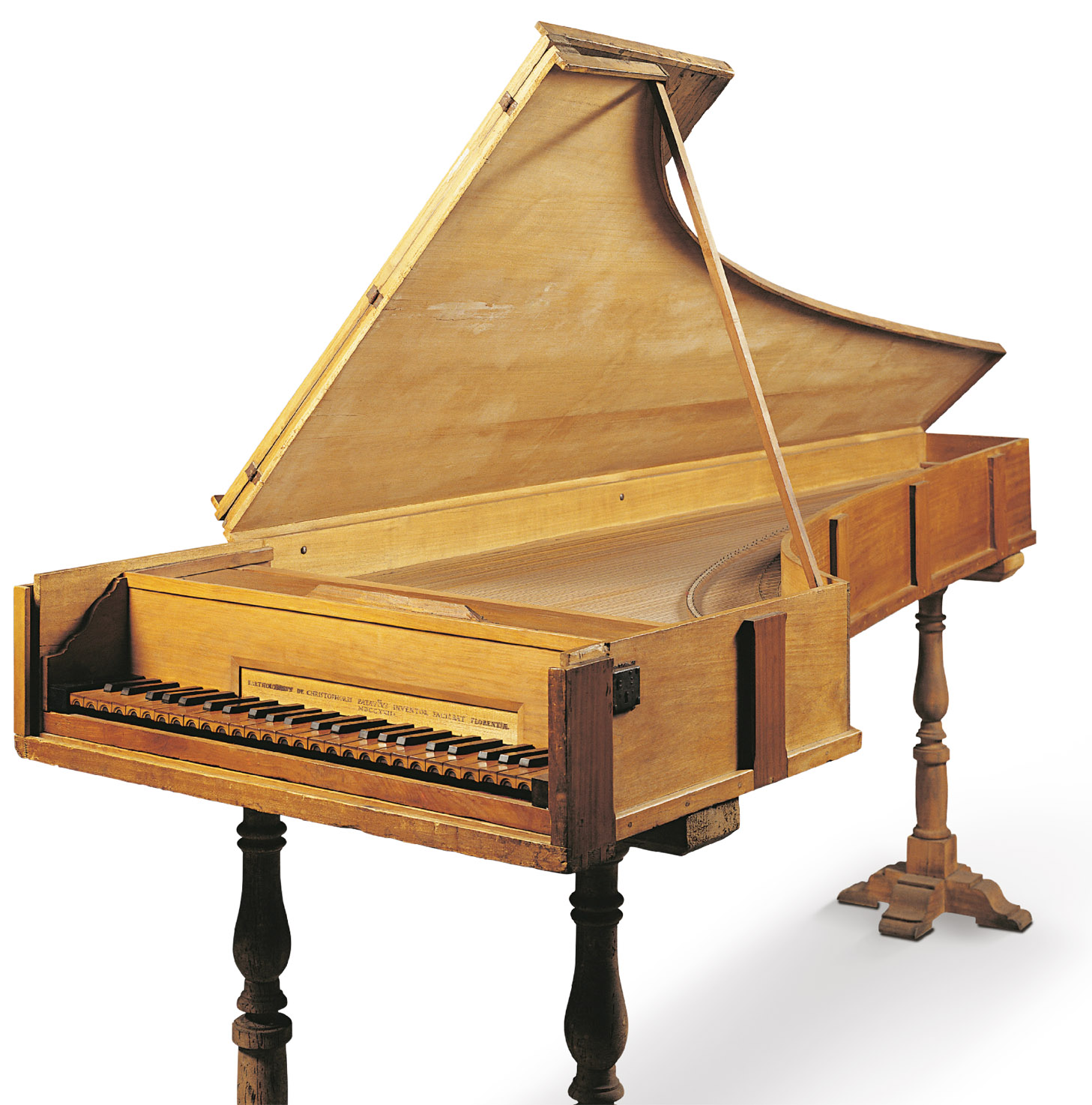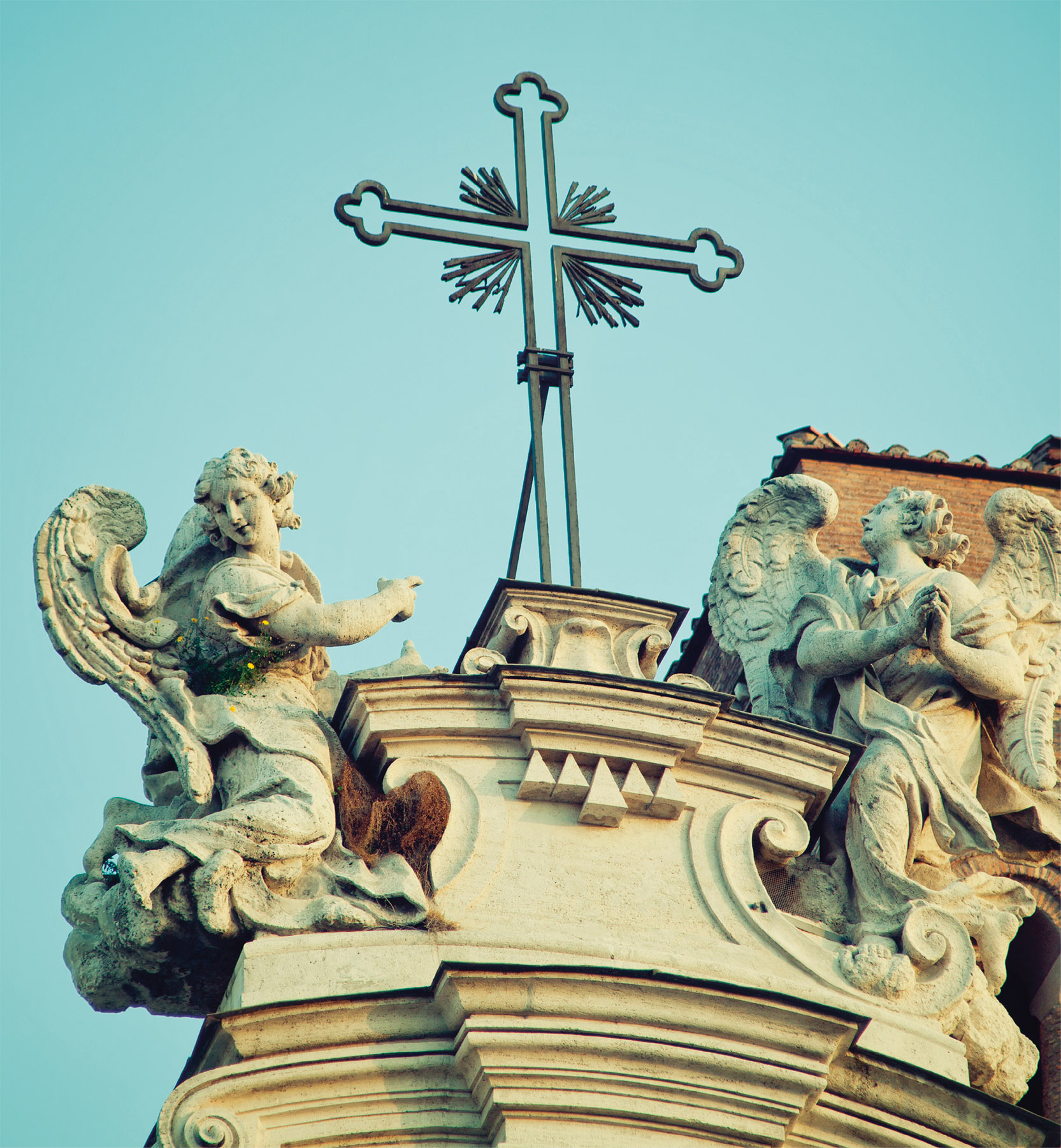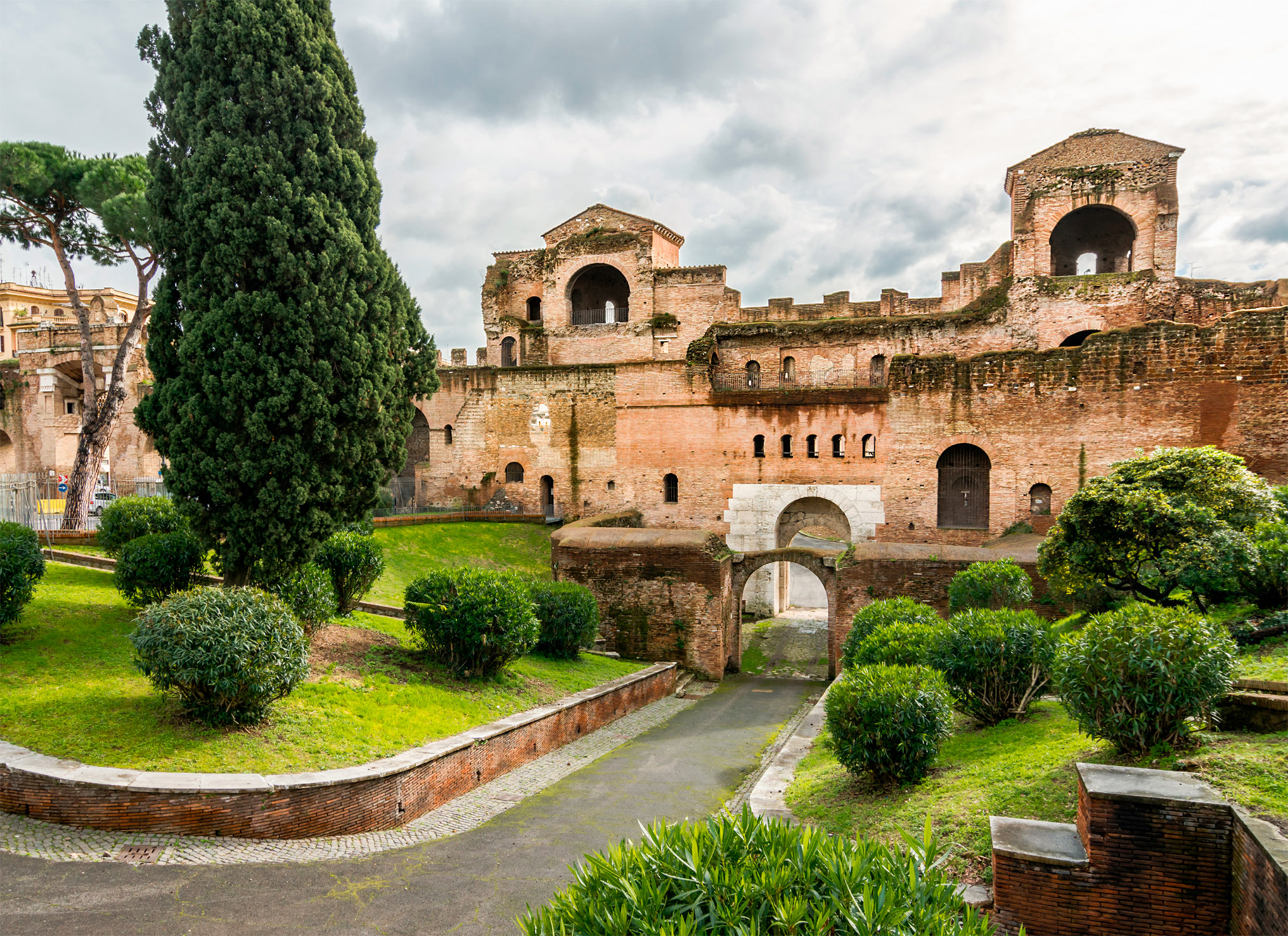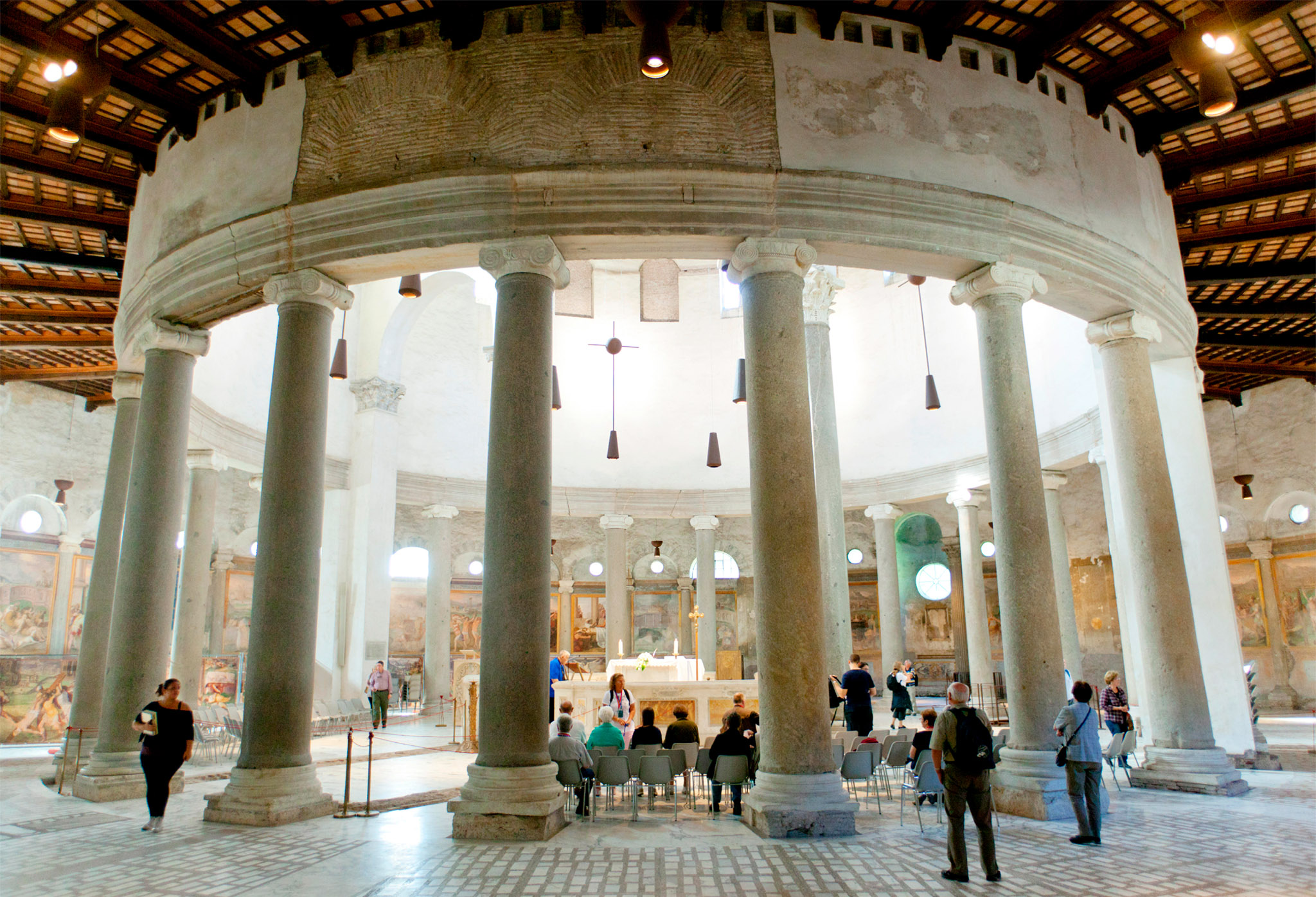
t 18th-century piano at the Museum of Musical Instruments
One of Rome’s lesser-known museums, the Museum of Musical Instruments stands on the site of the Sessorianum, the great Imperial villa belonging to Empress St Helena, later included in the Aurelian Wall. It houses a collection of more than 3,000 outstanding musical instruments from all over the world, including instruments typical of the various regions of Italy, and wind, string and percussion instruments of all ages (including ancient Egyptian, Greek and Roman).
There are also sections dedicated to church and military music. The greater part of the collection comprises Baroque instruments: be sure to see the gorgeous Barberini harp (dating to 1605–20), which is remarkably well-preserved, on the first floor in Room 13. There are also fine examples of spinets, harpsichords and clavichords, and one of the first pianos ever made, dating from 1722.

t 18th-century piano at the Museum of Musical Instruments
Emperor Constantine’s mother St Helena founded this church in AD 320 in the grounds of her private palace. Although the church stood at the edge of the city, the relics of the Crucifixion that St Helena had brought back from Jerusalem made it a centre of pilgrimage. Most important were the pieces of Christ’s Cross (croce means “cross”) and part of Pontius Pilate’s inscription in Latin, Hebrew and Greek: “Jesus of Nazareth King of the Jews”.
In the crypt is a Roman statue of Juno, found at Ostia, transformed into a statue of St Helena by replacing the head and arms.
The 15th-century apse fresco shows the medieval legends that arose around the Cross. Helena is shown hold-ing it over a dead youth and restoring him to life. Another episode shows its recovery from the Persians by the Byzantine Emperor Heraclitus after a bloody battle. In the centre of the apse is a tomb by Jacopo Sansovino made for Cardinal Quiñones, Emperor Charles V’s confessor (died 1540).

t The cross and angels adorning Santa Croce in Gerusalemme
This small 3rd-century amphitheatre was used for games and baiting animals. It owes its preservation to being part of the Aurelian Wall, but its graceful arches framed by brick semi-columns were blocked up. The amphitheatre is best seen from outside the walls, from where there is also a good view of the bell tower of Santa Croce in Gerusalemme.

t Porta Asinaria, part of the Aurelian Wall
The Porta Asinaria (Gate of the Donkeys) is one of the minor gateways built between 270 and 273 in the Aurelian Wall. Twin circular towers were added and a small enclosure built around the entrance; the remains are still visible. From outside the walls you can see the gate’s white travertine façade and two rows of small windows, giving light to two corridors built into the wall above the gateway. In AD 546 treacherous barbarian soldiers serving in the Roman army opened this gate to the hordes of the Goth Totila, who mercilessly looted the city. In 1084 the Holy Roman Emperor Henry IV entered Rome via Porta Asinaria with the antipope Guibert to oust Pope Gregory VII. The gate was badly damaged in the conflicts that followed.
The area close to the gate, in the Via Sannio is the home of a large flea market 8am–1pm Mon–Fri and till 6pm Sat.
On the east side of Piazza di San Giovanni in Laterano, a building by Domenico Fontana (1589) houses two surviving parts of the old Lateran Palace. One is the Sancta Sanctorum, the other the holy staircase, the Scala Santa. The 28 steps, said to be those that Christ ascended in Pontius Pilate’s house during his trial, are said to have been brought from Jerusalem by St Helena, the mother of Constantine. This belief, however, cannot be traced back any earlier than the 7th century.
The steps were moved to their present site by Pope Sixtus V (reigned 1585–90) when the old Lateran Palace was destroyed. No foot may touch the holy steps, so they are covered by wooden boards. They may only be climbed by the faithful on their knees, especially on Good Friday. In the vestibule there are various 19th-century sculptures including an Ecce Homo by Giosuè Meli (1874).
The Scala Santa and two side stairways lead to the Chapel of St Lawrence or Sancta Sanctorum (Holy of Holies), built by Pope Nicholas III in 1278. Decorated with fine Cosmatesque marble-work, the chapel contains many important relics, the most precious being an image of Jesus – the Acheiropoeton or “picture painted without hands”, said to be the work of St Luke, with the help of an angel. It was taken on procession in medieval times to ward off plagues.
On the walls and in the vault, restoration work has revealed 13th-century frescoes which for 500 years had been covered by later paintings.

t The 28 steps of the Scala Santa, with devotees kneeling and praying
Experience Lateran
|
eat Trattoria Luzzi With its cheerful checked tablecloths, lively atmosphere and crowd-pleasing menu, this trattoria is a good bet for a filling meal. The generously topped pizzas will set you up for an afternoon’s sightseeing. K7 ⌂ Via di San Giovanni in Laterano 88 § 06-709 633 ¡¡¡ |

t The unusual circular plan of the church of Santo Stefano Rotondo
One of Rome’s earliest Christian churches, Santo Stefano Rotondo was built between 468 and 483. It has an unusual circular plan with four chapels in the shape of a cross. It is lit by 22 high windows, a few of them restored or blocked by restorations carried out under Pope Nicholas V (reigned 1447–55), who consulted the Florentine architect Leon Battista Alberti. The archway in the centre may have been added during this period.
In the 16th century the church walls were frescoed by Niccolò Pomarancio with particularly gruesome illustrations of the martyrdom of innumerable saints. Some of the medieval decor remains: in the first chapel to the left of the entrance is a 7th-century mosaic of Christ with San Primo and San Feliciano.
Originally the arches of Porta Maggiore were not part of the city wall, but part of an aqueduct built by the Emperor Claudius in AD 52. They carried the water of the Aqua Claudia over the Via Labicana and Via Prenestina, two of ancient Rome’s main south-bound roads. You can still see the original roadway beneath the gate. In the large slabs of basalt – a hard volcanic rock used in all old Roman roads – note the great ruts created by centuries of cartwheel traffic. On top of the arches separate conduits carried the water of two aqueducts: the Aqua Claudia, and its offshoot, the Aqueduct of Nero. They bear inscriptions from the time of the Emperor Claudius and also from the reigns of Vespasian and Titus. In all, six aqueducts from different water sources entered the city at Porta Maggiore.
The Aqua Claudia was 68 km (43 miles) long, with over 15 km (9 miles) above ground. Its majestic arches are a notable feature of the Roman countryside, and a popular mineral water bears its name. One stretch of the Aqua Claudia had its arches bricked up when it was incorporated into the 3rd-century Aurelian Wall.
Experience Lateran
|
stay Palazzo Manfredi This chic bolthole boasts dead-ahead views of the Colosseum from its airy and impeccably tasteful rooms and suites. Guests can also enjoy the view from Aroma, the glass-walled Michelin-starred restaurant on the roof. K7 ⌂ Via Labicana 125 ∑ palazzomanfredi.com ¡¡¡ |
The aqueduct was built by Nero in the 1st century AD as an extension of the Aqua Claudia to supply Nero’s Golden House. Partly incorporated into later buildings, the arches make their way via the Lateran to the Celian Hill. Along the first section of the aqueduct, in Via Statilia, is a small tomb in the shape of a house, dating from the 1st century BC, bearing the names and likenesses of a group of slaves freed by the Statilii, the family of Claudius’s notorious wife Messalina.

t A tram running through an arch of the 1st-century AD Aqueduct of Nero
This museum, dedicated to the resistance to the Nazi occupation of Rome during World War II, is housed in the ex-prison of the Gestapo. The makeshift cells with bloodstained walls make a strong impact (see also Fosse Ardeatine).
In the middle of the tram junction near Porta Maggiore stands the well-preserved tomb of the rich baker Eurysaces and his wife Atistia, which was built in 30 BC. Roman custom forbade burials within city walls, and the roads leading out of cities became lined with tombs and monuments for the middle and upper classes. This tomb is shaped like a baking oven, and a low-relief frieze at the top shows Eurysaces presiding over his slaves through the various phases of the breadmaking process. The inscription on the tomb proudly asserts his origins and also reveals him as a freed slave, probably of Greek origin. Many men like Eurysaces saved money from their meagre slave salaries to earn their freedom and set up their own businesses, becoming the backbone of Rome’s economy.
The name of this convent (Four Crowned Saints) refers to the Christian soldiers martyred for refusing to worship a pagan god. Erected in the 4th century AD, it was rebuilt after the invading Normans set fire to the neighbourhood in 1084. Hidden within is the garden of the delightful inner cloister (admission on request), one of the earliest of its kind, built c.1220.
The convent’s main feature is the Chapel of St Sylvester – its remarkable frescoes (1246) recount the legend of the conversion to Christianity of the Emperor Constantine by Pope Sylvester I (reigned 314–35). Stricken by the plague, Constantine is prescribed a bath in children’s blood. Unable to bring himself to obey, Constantine is visited in a dream by St Peter and St Paul. They advise him to find Sylvester, who cures him and baptizes him. The final scene shows the emperor kneeling before the pope. The implied idea of the pope as heir to the Roman Empire would affect the whole course of medieval European history.